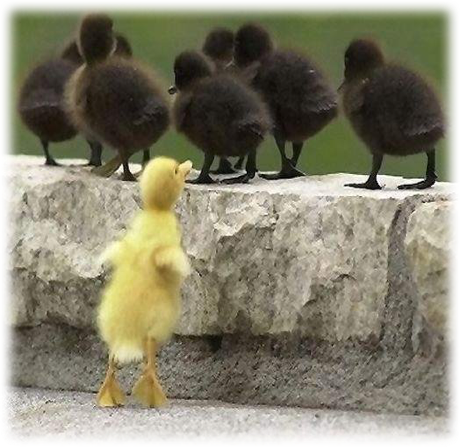 Groundhog Day came upon me last week when I read another “Emerging Leader’s” development plan in which it stated that the recipient needed to “increase their profile by growing their “personal network” and influence across the business”. On the same day, I read an email that informed me of a session by an author of a book “Who You Know” in which I “can learn to manage and leverage my “personal network” to achieve success and increase my influence”.
Groundhog Day came upon me last week when I read another “Emerging Leader’s” development plan in which it stated that the recipient needed to “increase their profile by growing their “personal network” and influence across the business”. On the same day, I read an email that informed me of a session by an author of a book “Who You Know” in which I “can learn to manage and leverage my “personal network” to achieve success and increase my influence”.
They seems connected at first, then…
Firstly, a “personal network” is a contradiction. Networks are based on the notion that we are interdependent. So how can my network be personal?
Secondly, haven’t we (especially women) been fighting for years against a “boys club” based on “who you know” which has excluded women/others (and still does), from top jobs and Boards?
So, do I want to promote the notion of “Who You Know” as the way forward to success?
The answer is “no”, and this is why:
1. The foundational assumption of a network is that actors and their actions are interdependent rather than independent. It is not about “me” or “you (or even “we”). It’s about the relational tie between – a concept difficult to grasp in an individualistic world.
2. Relational ties are the channel for the flow of reciprocal communicating and resourcing. A tie is not present for either party’s personal success. Furthermore, the premise is that a personal network flourishes on the basis of strong quality connections with key people. According to the research, strong ties, depend on a combination of longevity of relationship, mutual confiding, intimacy and reciprocal services – making this, if correct, not an easy ride. But more importantly, this is just not accurate.
In one of the most cited papers in sociology written over forty years ago, “The Strength of Weak Ties”, Granovetter (1973) showed the different merits of the strong and weak connections (ties) that make up our social network. His research showed that it is actually the person you are least connected with that can be the one to offer you the greatest opportunities.
Before dismissing this research from the pre-internet era as a dinosaur, currently, this paper is the basis of much of the new collaboration technologies. This is because weaker ties are also the pathway to innovation, new ideas and agility.
Ties can be strong, weak, or absent. One could say that strong ties are between “friends” while weak ties are between “acquaintances”. Strong ties are vital. Through them, we get emotional support in our often complex work environments and get help for our work. Strong ties also make for cohesive teams and cohesive teams are productive (in the short term).
Weaker ties can be described as most of our contacts on Facebook, Twitter or Linkedin who we may not know but who we read or follow – or people who know us, but whom we have not met. We may have common interests or want to link each other to a resource. In organisations, weak ties work across teams – a connection with an EA who works for several leaders, or an acquaintance who works in another team, a specialist you have met at conferences.
What Granovetter showed was that those to whom we are weakly tied are more likely to move in circles different from our own and will thus have access to information different from that which we receive through our strong ties. Furthermore, weak ties are more likely to link us to members of different groups than are strong ones. In Social Network Analysis terms, these ties form ‘bridges or brokers’. University of Chicago’s, Ron Burt has spent a career analysing the contribution to organisations that ‘bridges and brokers’ make. His research shows leaders identified as brokers are promoted more quickly, paid more and have their ideas more readily accepted!
So this is not an either/or. In our work in organisations, Collaboration by Design, there are two complimentary aspects to the flow of collaboration across a social network. One is to build strong and cohesive teams with strong quality relationships, the other to encourage the collaboration through the weaker ties, to ensure that there is diversity of thinking to encourage influence and innovation.
So, don’t dismiss your weaker connections in your social network as shallow and artificial. If you just want a shoulder to cry on or somebody to support your point of view grow your strong ties and stick with them. If you want to find a job, a new way of doing things or even a new lover, break out and go to a weaker connection – they will expand your horizons!
